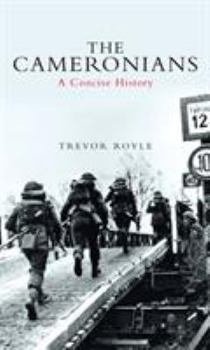The Cameronians: A Concise History
In May 1968, as part of cutbacks to the British Army, The Cameronians (Scottish Rifles) was disbanded at a moving ceremony held at Douglas in Lanarkshire at the same spot it had been raised in 1689. And yet, although the regiment is no more and is unlikely ever to be restored to the Army list, its place in history is unassailable. For many years it was Scotland's only rifle regiment, marching at 140 paces per minute and its dark rifle green tunics marked it out as an elite formation. It embraced the history of one regiment, The Cameronians, which had its origins in the turbulent period that accompanied the rise of the House of Orange at the end of the 17th century, while its other component part--the 90th (Perthshire Light Infantry)--was raised as a light infantry regiment during the war against Revolutionary France. Both regiments saw extensive service in Europe, India, and Africa and following amalgamation in 1881 as part of the Cardwell/Childers reforms, The Cameronians (Scottish Rifles) quickly built up a solid reputation as a fighting regiment. During World War I it raised 27 battalions and during World War II its battlalions served in Europe and Burma. In the course of its long history, the regiment provided the British army with many distinguished soldiers including three field marshals: Viscounts Hill and Wolseley and Sir Evelyn Wood. Always tough and enduring in battle, it reflected the character of its main recruitment area--Glasgow and Lanarkshire--and in later years it took self-conscious pride when the Germans nicknamed its soldiers Giftzwerge or poison dwarfs. The Cameronians puts its story into the context of British military history and makes use of personal testimony to reveal the life of the regiment.
Format:Hardcover
Language:English
ISBN:184596327X
ISBN13:9781845963279
Release Date:February 2009
Publisher:Mainstream Publishing Company
Length:238 Pages
Weight:0.50 lbs.
Dimensions:1.0" x 5.5" x 8.5"
Related Subjects
HistoryCustomer Reviews
0 rating





